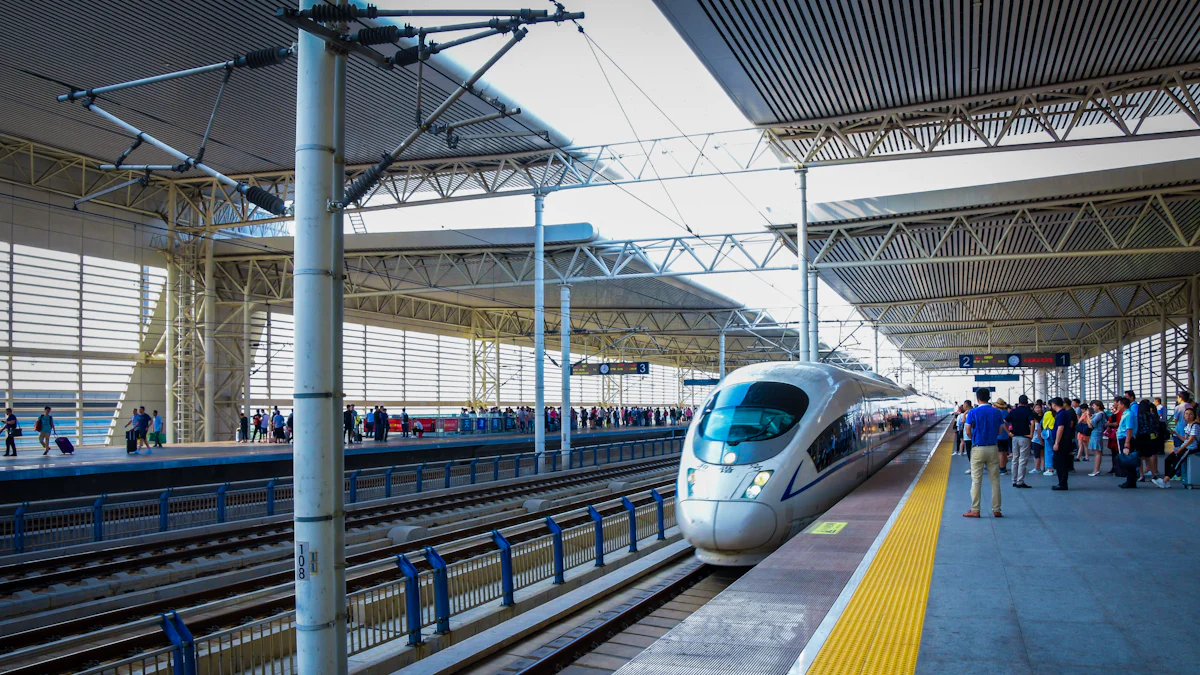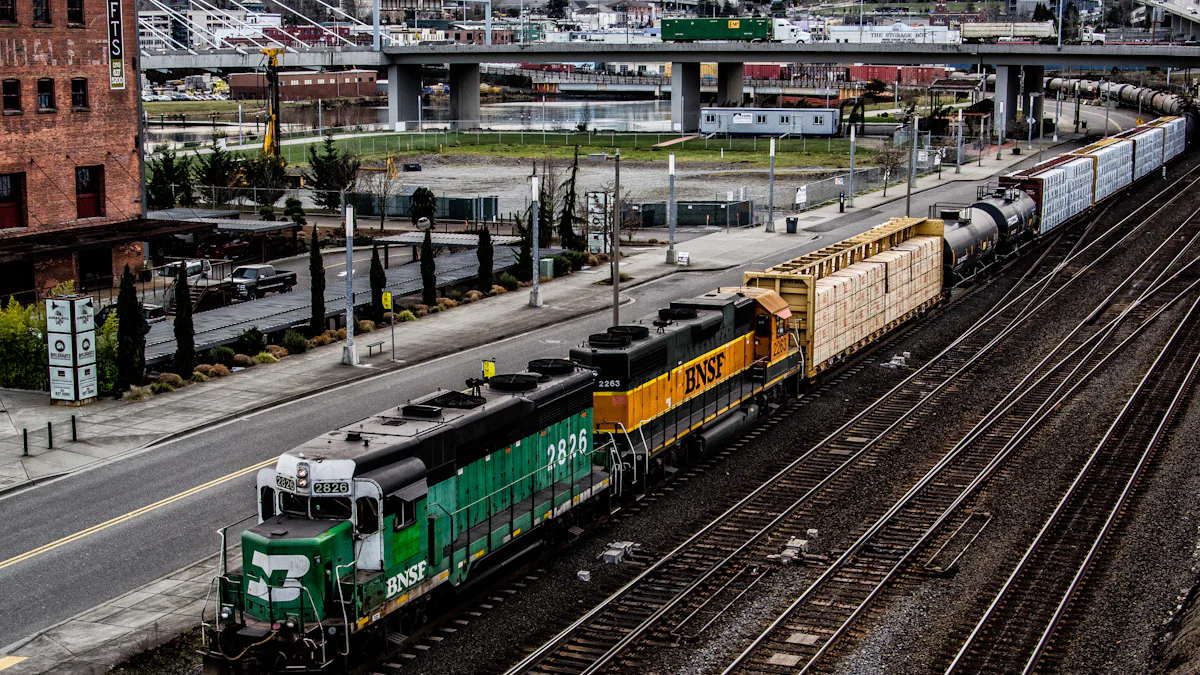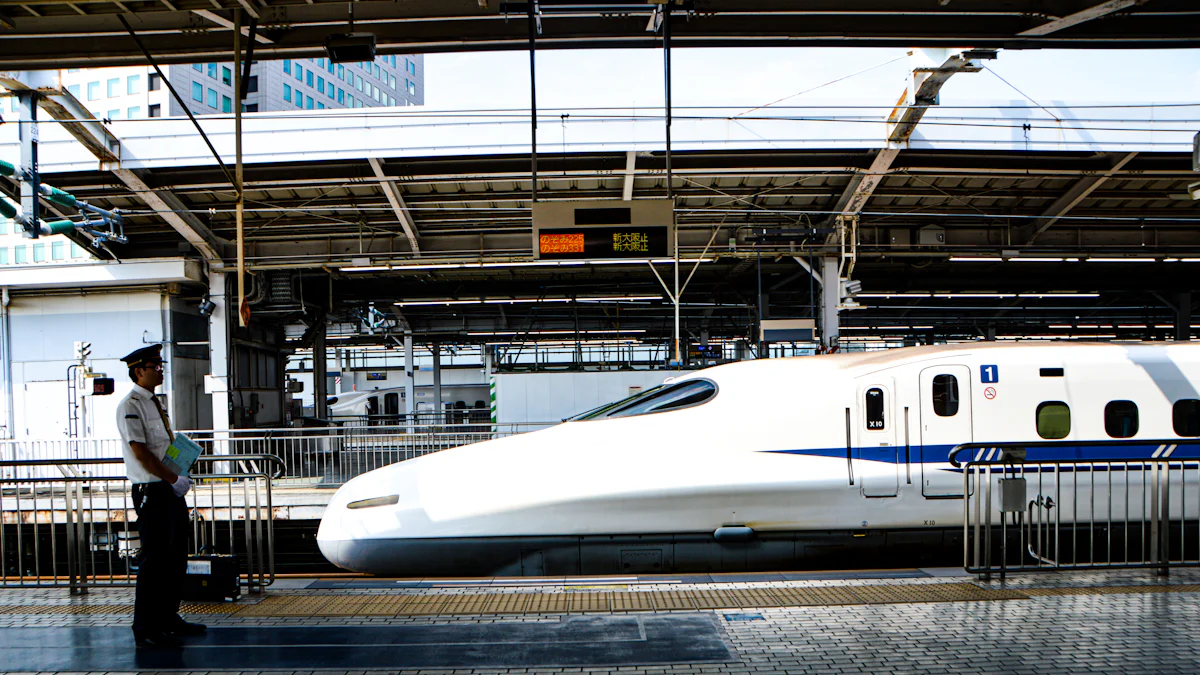Understanding Rail Transport Market Trends: The China-Europe Railway Influence

Rail transport is a vital component of global trade. The China-Europe Railway has become a major player in this sector. This railway link has experienced a tenfold growth in services from 2016 to the previous year, with more than 17,000 annual freight train services. In 2023, the China-Europe Railway Express transported goods valued at $56.7 billion. This article seeks to delve into the market trends shaped by the China-Europe Railway, focusing on Understanding Rail Transport Market Trends.
Understanding Rail Transport Market Trends
Global Rail Transport Landscape
Key Players and Regions
The global rail transport market features several key players and regions. Major players include China Railway Corporation, Deutsche Bahn, and Russian Railways. These companies dominate the market with extensive networks and advanced technologies. The Asia-Pacific region leads the market, followed by Western Europe. Asia-Pacific's dominance stems from rapid urbanization and significant investments in rail infrastructure.
Market Size and Growth
The rail transport market continues to grow steadily. In 2022, the global railroad market size reached USD 281.24 billion. Projections indicate a compound annual growth rate (CAGR) of 5.6% from 2023 to 2030. The market size is expected to reach USD 748.97 billion by 2028. This growth results from high-speed trains, technological advances, and efforts to reduce carbon emissions.
Emerging Trends in Rail Transport
Technological Advancements
Technological advancements drive significant changes in the rail transport market. Automation and digitalization enhance operational efficiency. Smart rail systems and predictive maintenance improve service reliability. Real-time monitoring and tracking of temperature, humidity, air pressure, and location ensure the safe transport of high-value goods. These innovations contribute to the overall growth and competitiveness of the rail transport sector.
Sustainability Initiatives
Sustainability initiatives play a crucial role in shaping the rail transport market. The industry focuses on energy efficiency and emission reduction. Green technologies, such as electric and hydrogen-powered trains, reduce the environmental impact of rail transport. Governments and companies invest in sustainable practices to meet global climate goals. These efforts promote green transportation and support the long-term growth of the rail transport market.
The China-Europe Railway: A Game Changer

Historical Context and Development
Inception and Early Years
The China-Europe Railway Express began operations in 2011, creating a new land route that directly links China and Europe. This initiative aimed to enhance trade connectivity between the two regions. The early years saw modest growth, with initial services focusing on key cities such as Chongqing and Duisburg. The railway provided an alternative to traditional sea and air routes, offering faster transit times and more reliable schedules.
Recent Developments and Expansions
Recent years have witnessed significant expansions and developments in the China-Europe Railway. The number of freight train services increased tenfold from 2016 to the previous year. Over 17,000 annual freight train services now operate, transporting goods valued at $56.7 billion in 2023. The network has expanded to cover over 30 countries across Eurasia. Strategic partnerships with major rail platforms have enhanced operational capacity and stability. These partnerships include collaborations with seven major platform companies, leveraging over 15 years of operational experience.
Economic and Trade Impacts
Trade Volume and Economic Benefits
The China-Europe Railway Express shipped 1.9 million TEUs of goods in 2023, underscoring its importance for supply chains and trade between China and Europe. The railway has become a cornerstone of Eurasian trade, signifying a pivotal shift in trade dynamics. The economic benefits include reduced transportation costs and improved market access for businesses in both regions. Government subsidies and cost advantages further enhance the railway's economic feasibility.
Impact on Supply Chains
The China-Europe Railway has significantly impacted global supply chains. The integration with other transport modes, such as sea-rail intermodal transport and domestic multimodal transport, improves transportation efficiency. Real-time monitoring and tracking technologies ensure the safe and efficient transport of high-value goods. The railway's role in the global supply chain is crucial, especially in the context of shifting manufacturing bases and geopolitical dynamics. The continuous adaptation to market demands through new routes and enhanced service offerings demonstrates the railway's commitment to innovation and market responsiveness.
Technological Innovations in Rail Transport

Automation and Digitalization
Smart Rail Systems
Smart rail systems have revolutionized the rail transport industry. These systems use advanced technologies such as artificial intelligence (AI) and data analysis software to enhance operational efficiency. AI-enabled software, like that developed by RailVision Analytics in Canada, helps locomotive engineers make real-time adjustments for fuel efficiency. This reduces greenhouse gas emissions and improves overall performance.
Smart rail systems also incorporate real-time monitoring and tracking capabilities. Sensors monitor temperature, humidity, air pressure, and location. This ensures the safe transport of high-value goods. The integration of these technologies enhances service reliability and customer satisfaction.
Predictive Maintenance
Predictive maintenance represents a significant advancement in rail transport. This approach uses data analytics and machine learning to predict equipment failures before they occur. By analyzing data from sensors and other monitoring devices, predictive maintenance identifies potential issues early. This allows for timely interventions, reducing downtime and maintenance costs.
The German Aerospace Center (DLR) focuses on sustainable and capacity-enhancing technologies for future rail transport. DLR's research includes advancements in propulsion systems, aerodynamics, and automation. These innovations contribute to more efficient and reliable rail operations.
Green Technologies
Energy Efficiency
Energy efficiency remains a critical focus in rail transport. Advanced propulsion systems, such as electric and hydrogen-powered trains, offer significant energy savings. These technologies reduce reliance on fossil fuels and lower operating costs. The adoption of energy-efficient practices aligns with global efforts to combat climate change.
AI-enabled software also plays a role in enhancing energy efficiency. By optimizing fuel usage, these systems help rail operators achieve substantial energy savings. This contributes to the overall sustainability of rail transport.
Emission Reduction
Emission reduction is another key area of innovation in rail transport. Electric and hydrogen-powered trains produce fewer emissions compared to traditional diesel engines. This shift towards cleaner energy sources supports global climate goals and reduces the environmental impact of rail transport.
Governments and companies invest heavily in green technologies. These investments promote the development and adoption of sustainable practices within the industry. The focus on emission reduction aligns with broader efforts to create a greener and more sustainable future.
Customer Experience and Market Dynamics
Enhancing Customer Experience
Service Quality and Reliability
Service quality and reliability remain paramount in rail transport. Passengers expect punctuality, cleanliness, and comfort during their journeys. Rail operators like NJ TRANSIT conduct regular customer satisfaction surveys to gauge performance. These surveys ask passengers to rate various attributes on a scale from 0 to 10. Attributes include punctuality, value for money, and safety measures. High scores in these areas indicate strong service quality and reliability.
The National Rail Passenger Survey (NRPS) also provides valuable insights. This survey consults over 50,000 passengers annually. It offers a comprehensive view of passenger satisfaction across different rail services. Consistent high ratings in punctuality and service reliability contribute to positive customer experiences.
Customer-Centric Innovations
Customer-centric innovations play a crucial role in enhancing passenger experiences. Rail operators invest in technologies that improve convenience and comfort. For instance, smart ticketing systems streamline the boarding process. Real-time updates on train schedules and delays keep passengers informed. These innovations reduce stress and enhance overall satisfaction.
Moreover, rail companies introduce amenities that cater to passenger needs. Wi-Fi services, comfortable seating, and onboard entertainment options are examples. These features make journeys more enjoyable and attract more passengers. Investments in customer-centric innovations demonstrate a commitment to improving the travel experience.
Market Dynamics and Competitive Landscape
Competitive Strategies
Rail operators adopt various competitive strategies to maintain market position. Strategic partnerships with other transport modes enhance service offerings. The integration of rail services with sea and road transport provides comprehensive logistics solutions. This approach improves efficiency and attracts more customers.
Additionally, rail companies focus on expanding their networks. New routes and increased frequency of services cater to growing demand. Investments in high-speed trains and advanced technologies also boost competitiveness. These strategies ensure that rail operators remain relevant in a dynamic market.
Market Challenges and Opportunities
The rail transport market faces several challenges and opportunities. One significant challenge is the need for continuous investment in infrastructure. Aging rail networks require upgrades to meet modern standards. This involves substantial financial resources and long-term planning.
However, the market also presents numerous opportunities. The passenger rail segment shows promising growth potential. Inexpensive fares and increased tourism drive demand for rail travel. Investments in newer and faster trains, such as bullet trains and metros, further propel growth.
Moreover, sustainability initiatives offer opportunities for innovation. Green technologies and energy-efficient practices align with global climate goals. Rail operators can capitalize on these trends to enhance their market position.
Understanding Rail Transport Market Trends reveals that the industry continues to evolve. Rail operators must adapt to changing customer expectations and market dynamics. By focusing on service quality, customer-centric innovations, and strategic investments, the rail transport sector can thrive in a competitive landscape.
The blog discussed several key points regarding the rail transport market and the China-Europe Railway. The global rail transport landscape features major players like China Railway Corporation, Deutsche Bahn, and Russian Railways. The market continues to grow due to high-speed trains and technological advancements.
The China-Europe Railway has transformed the rail transport market. Since its inception in 2011, it has become a cornerstone of Eurasian trade. The service now connects over 223 cities in Europe and more than 100 cities in Asia. In 2023, the railway transported goods valued at $56.7 billion, highlighting its economic significance.
Future trends indicate continued growth and innovation. The rail transport market will likely see further technological advancements and sustainability initiatives. The China-Europe Railway will continue to play a pivotal role in global logistics and supply chain resilience.
See Also
Revealing Cutting-Edge Strategies: Cross-Border E-commerce Supplier Partnerships
5 Game-Changing Trends for Enhanced Supply Chain Efficiency
Unraveling the Effects: Trends in Logistics Risk
Ready for the Future? Delving into the Latest Transport Tech for Supply Chains
Revolutionizing Supply Chain Management: Big Data and Machine Learning
